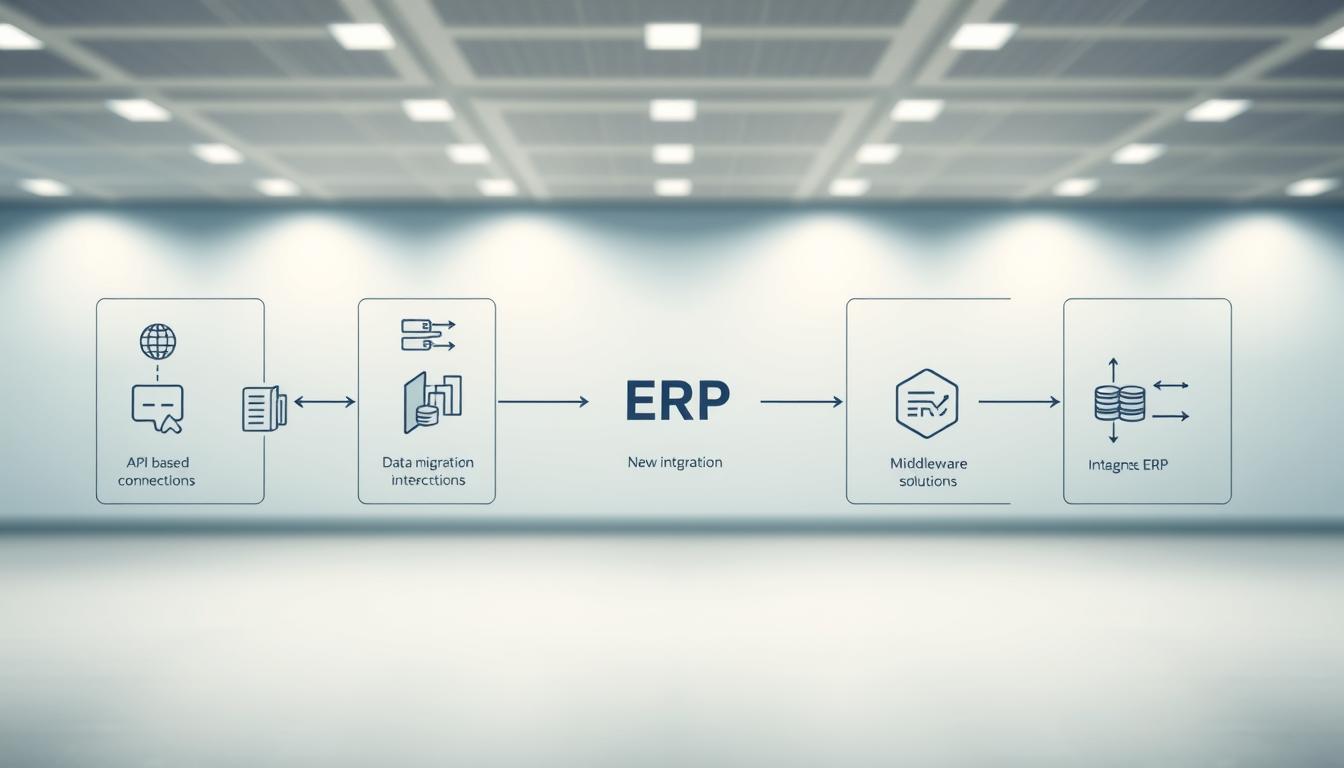Have you ever wondered why many businesses struggle to link their old systems with new ERP solutions? In today’s fast world, making sure systems work together is key to success. For businesses in the Philippines, connecting old systems with new ERP tools is essential.
This article will show you the challenges and benefits of this process. It also offers practical tips for small and medium-sized enterprises (SMEs) in the region.
Key Takeaways
- Understanding the significance of system compatibility between legacy systems and ERP solutions.
- The critical role of data migration in successful integration.
- Common challenges faced by organizations during integration.
- Benefits of merging legacy systems with modern ERP solutions.
- Actionable strategies for SMEs to overcome integration hurdles.
Understanding Legacy Systems
Legacy systems are key in many companies, like those in the Philippines. They are vital for daily work but have big weaknesses. Knowing their flaws is key for businesses wanting to update or add new tech.
Characteristics of Legacy Systems
Legacy systems have certain traits:
- They’re built on old software, making it tough to link with new tech.
- Their architecture is tight, limiting flexibility and adaptability.
- They use old programming languages, which can make it hard to find skilled developers.
- They handle critical tasks, making them hard to swap out despite their issues.
Challenges Posed by Legacy Systems
Using legacy systems brings many challenges, such as:
- System limitations that block growth and updates.
- High costs for keeping old software running.
- The danger of system failures that can mess up business.
- Issues with following current security standards.
Looking at these issues can help find ways to improve. This can guide companies in the Philippines through the digital world.
Evolution of Modern ERP Solutions
Modern ERP solutions have changed a lot to meet business needs. They help companies work more efficiently and smoothly. Today, these systems offer many features that improve how well they work together and make businesses more agile.
Key Features of Modern ERP Solutions
Modern ERP solutions like SAP and Microsoft Dynamics have many benefits. They manage data in one place, helping information flow better across teams. You can also customize workflows to fit your business needs.
Their design makes it easy to connect with other apps. And, they offer real-time analytics for quick, smart decisions.
Benefits of Cloud-Based ERP Systems
Cloud-based ERP systems bring many benefits. They help businesses stay flexible and adapt quickly to market changes. They also save money on hardware, which is great for small and medium enterprises in the Philippines.
Scaling up operations is easy in the cloud. This keeps companies competitive. Cloud-based systems are perfect for today’s fast business world.
Benefits of Integrating Legacy Systems with Modern ERP Solutions
Integrating old systems with new ERP solutions brings many benefits. It helps businesses save money by not having to replace systems. It also makes it easier to share information across different parts of the company.
Avoiding Costly System Replacements
Replacing old systems can be very expensive. But, combining them with modern ERP solutions is a cost-effective solution. This way, businesses can keep their unique processes and knowledge. They also get to use the latest features from modern ERP, without much disruption.
Enhanced Data Accessibility and Insights
When old systems are linked with new ERP platforms, data becomes more accessible. Teams can use their knowledge and get insights from across the company. This leads to better decisions and more efficient operations. It turns isolated data into a valuable tool for planning.
Common Integration Approaches
Integrating old systems with new ERP solutions needs careful thought. Companies have different needs that guide their choice between direct connections and middleware like an Enterprise Service Bus (ESB). Each method has its benefits and drawbacks, making the right choice crucial for each business.
Point-to-Point Integration
Point-to-point integration sets up direct links between certain apps. It’s fast and easy to set up, needing no extra middleware. In the Philippines, this might be chosen for a few systems. But, it can get hard to manage as more connections are added, leading to more upkeep.
Enterprise Service Bus (ESB) Solutions
An Enterprise Service Bus is a more advanced choice for many systems. It uses ESB middleware to connect different parts smoothly. This makes it easy to add or change parts without much trouble. It also makes data flow better and cuts down on mistakes. Many businesses in the Philippines find it helpful for growing data needs.
| Integration Approach | Advantages | Challenges |
|---|---|---|
| Point-to-Point | Simple implementation, Fast data transfer | Limited scalability, Complex management with more connections |
| ESB | Centralized communication, Flexible components, Improved data consistency | Higher initial setup cost, Requires technical expertise for deployment |
Data Migration & Integration
Data migration is key for a smooth transition between old systems and new ERP solutions. A well-planned approach helps move data safely and keeps it accurate. Good strategies make the process easier and reduce risks.
Strategies for Successful Data Migration
Before starting, it’s important to check the data carefully. This step helps find and fix any problems. Using clear strategies, like checking data quality and testing well, makes the move smoother.
Also, looking into digital transformation benefits can help follow industry best practices.
Ensuring Data Integrity During Migration
Keeping data safe during migration is crucial. It’s best to always check and validate the data. This way, Filipino SMEs can move their data without trouble.
By focusing on data integrity, companies can make their data more reliable. This makes the transition easier and more reliable.
Integration Challenges with Legacy Systems
Integrating legacy systems with modern ERP solutions can be tough. Technical issues often block the way because of differences in programming languages and system designs. Sometimes, extra software is needed to connect these systems well.
Technical Incompatibilities to Overcome
Legacy systems and modern ERP platforms were built differently. This can cause problems when trying to share data between them. Companies need to check their legacy systems for specific issues. This ensures integration works without losing important functions.
Common problems include:
- Outdated programming languages.
- Lack of APIs for data sharing.
- Inflexible database structures.
Security Considerations in Integrating Systems
Integrating legacy systems also raises big security worries. Older systems often don’t have today’s security features, making them easy targets for hackers. It’s key to make sure data is safe during integration.
Here are some security steps to take:
- Do a deep security check on legacy systems.
- Use strong encryption for data moving between systems.
- Keep security policies up to date with new threats.
Fixing technical and security issues is key for smooth integration. By taking early action, companies can create a safer and more effective environment. This combines the best of old and new systems.
Best Practices for Successful Integration
For organizations, merging old systems with new ERP solutions is key. A good start is a detailed look at current processes and tech. This step helps figure out what’s needed for a smooth transition to a unified system.
Conducting a Comprehensive Assessment
A thorough assessment is the base for a successful merge. It means checking the IT setup, finding both old and new systems. Important things to look at include:
- How data formats and structures match up
- Current workflows and procedures
- Challenges in integrating
- What resources are available for the job
By looking at these, companies can make their integration plans fit their needs. This boosts efficiency and cuts down on downtime.
User Training and Support Implementation
Good user training is crucial for a smooth integration. Training sessions help employees get used to new ERP systems. Also, ongoing support is key. It makes sure users have the help they need, leading to better adoption rates. Key points to focus on are:
- Hands-on workshops for real-world learning
- Clear guides and documentation
- Support channels after the system is set up
Putting effort into training and support makes the integration process better. It leads to more productivity and less resistance to change.
Real-World Examples of Successful Integration
Many Philippine companies have adopted modern ERP solutions. They have successfully integrated these systems with their old systems. These examples show different strategies for different needs, improving functionality while keeping operations running smoothly.
Case studies highlight important themes. They show the value of structured methods and the need to meet individual needs during integration.
Philippine Companies Successfully Integrating ERP Solutions
Several big names in the Philippines have successfully integrated ERP solutions. Notable companies include:
| Company Name | Legacy System | ERP Solution | Key Achievements |
|---|---|---|---|
| SM Investments | Homegrown POS System | SAP S/4HANA | Increased Efficiency in Inventory Management |
| Jollibee Foods Corporation | Custom In-House Applications | Oracle Cloud ERP | Enhanced Data Centralization |
| Globe Telecom | Multiple Disparate Systems | Microsoft Dynamics 365 | Streamlined Customer Service Operations |
Lessons Learned from Case Studies
These implementations have taught us valuable lessons. They guide other companies thinking about similar steps. Key lessons include:
- The importance of thorough planning and assessment before starting.
- The need for teamwork and open communication to overcome obstacles.
- Training programs for users to help them use the ERP system well.
- Customizing the ERP system to fit specific business needs.
Future Trends in ERP Integration
The world of ERP integration is changing fast. AI and machine learning are playing big roles. These technologies help companies manage data better and work more efficiently. For Filipino businesses, adopting these trends is key to staying ahead.
Integration of AI and Machine Learning
AI and machine learning are big steps forward in ERP. They let companies automate tasks, analyze data quickly, and make smart decisions. For example, AI can spot trends before they happen, helping businesses stay ahead.
Machine learning also makes operations better by learning from past data. It improves processes over time. This means companies can use resources better and save money. As Filipino industries use these technologies, they’ll understand their operations better, making better choices.
Adding AI and machine learning to ERP systems is a big change. It helps companies deal with old system problems. By using these advanced tools, companies build strong, flexible systems ready for the future.
Conclusion
Ensuring compatibility between old systems and new ERP solutions is key for small and medium enterprises (SMEs) in the Philippines. As businesses move towards digital transformation, combining these systems boosts efficiency. It also unlocks valuable data insights, helping the company grow.
Knowing the challenges of old systems and the perks of new ERP solutions helps Filipino companies. They can better handle system integration. This knowledge lets them make smart choices that fit their goals.
Adopting modern ERP solutions helps businesses stay ahead in the digital world. It makes them competitive, strong, and ready for new changes. This forward-thinking approach leads to lasting growth and top-notch operations.




